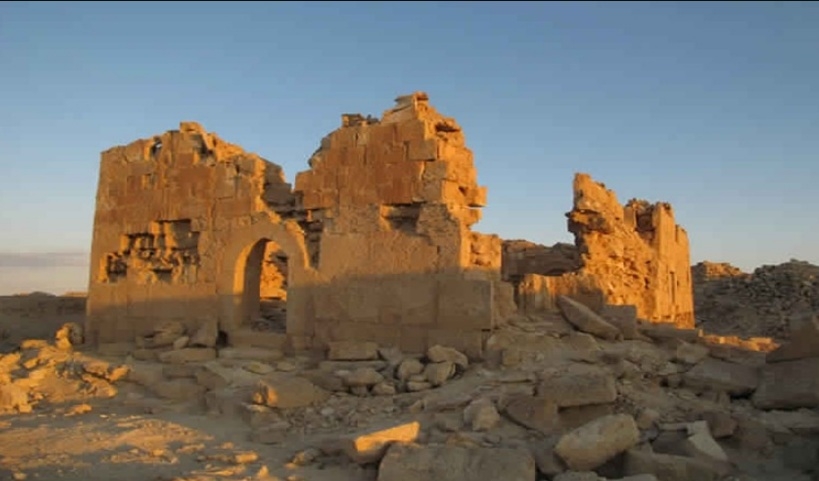Qalaat Al Gindi

Qalaat Al Gindi is a fortress built in 1187 by Saladin in Southern Sinai, and rediscovered by the Jules Barthoux in 1909. The main purpose was to guard the routes of pilgrimage from Northern Africa to Mecca. It was also used as a caravanserai. Qalaat Al Gindi occupies a strategic position between Suez and Aqaba along a very important route which for centuries had been the land route for trade, pilgrimage and for military purposes and which connected the two gulfs (Suez and Aqaba).
It's built in limestone on a 285 m high escarpment and it rises on a plateau at 645 m above sea level. It was built to be water supply which came from the Ayn Sadr source, through run-off waters or from cisterns dug in the ground; three underground cisterns are still in perfect state of conservation.
Within the fortress were found shops and many vaulted rooms hewn out of rock. A Fatimid style mihrab dominates the fortress. This was a central meeting place for the three caravans that crossed the Sinai, but was also intended to be a fortification against attacks of the Crusaders.
Many Muslims from Africa and the Mediterranean also used the caravan routes, so they too ended up at Qalaat Al Gindi. However, Salah ad-Din managed to beat back the invading Crusaders before the fort was actually completed. Located about 50 miles southeast of the Ahmed Hamdi Tunnel (At Suez) this monument literally sits in the middle of nowhere, and receives few visitors.
